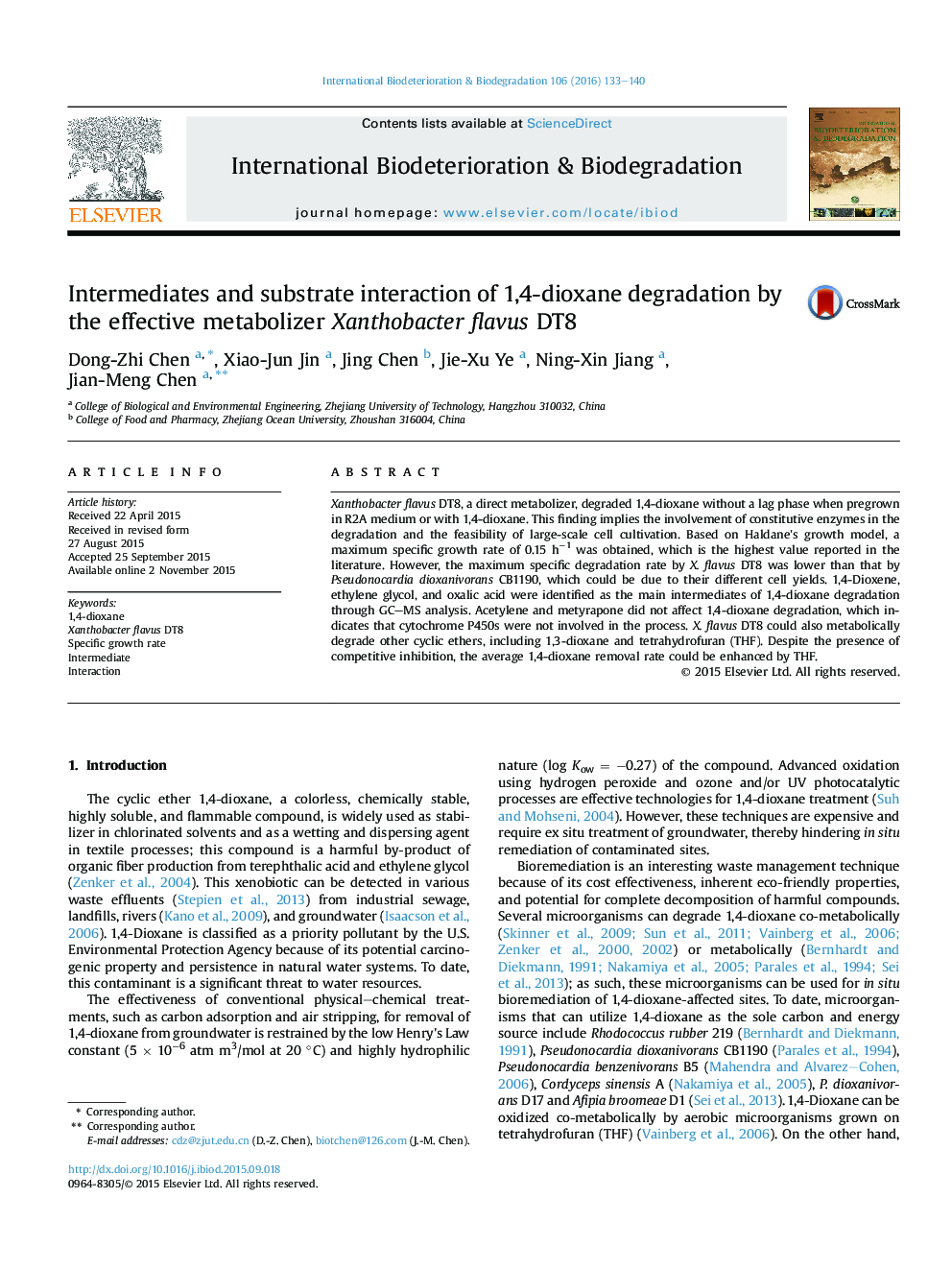| Article ID | Journal | Published Year | Pages | File Type |
|---|---|---|---|---|
| 4364295 | International Biodeterioration & Biodegradation | 2016 | 8 Pages |
•Induction period was not required in 1,4-dioxane degradation by R2A-grown cells.•The specific growth rate rather than degradation rate exhibited great advantage.•Several intermediates including 1,4-dioxene were identified.•Cytochrome P450s were not responsible for 1,4-dioxane oxidation.•1,4-Dioxane removal was enhanced by tetrahydrofuran despite of competitive inhibition.
Xanthobacter flavus DT8, a direct metabolizer, degraded 1,4-dioxane without a lag phase when pregrown in R2A medium or with 1,4-dioxane. This finding implies the involvement of constitutive enzymes in the degradation and the feasibility of large-scale cell cultivation. Based on Haldane's growth model, a maximum specific growth rate of 0.15 h−1 was obtained, which is the highest value reported in the literature. However, the maximum specific degradation rate by X. flavus DT8 was lower than that by Pseudonocardia dioxanivorans CB1190, which could be due to their different cell yields. 1,4-Dioxene, ethylene glycol, and oxalic acid were identified as the main intermediates of 1,4-dioxane degradation through GC–MS analysis. Acetylene and metyrapone did not affect 1,4-dioxane degradation, which indicates that cytochrome P450s were not involved in the process. X. flavus DT8 could also metabolically degrade other cyclic ethers, including 1,3-dioxane and tetrahydrofuran (THF). Despite the presence of competitive inhibition, the average 1,4-dioxane removal rate could be enhanced by THF.
